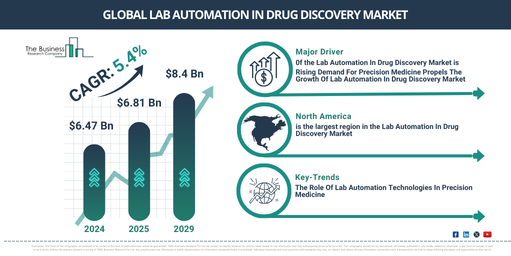Overview Of The Anti-Aging Drugs Market 2024-2033: Growth And Major Players Analysis
The Business Research Company’s global market reports are now updated with the latest market sizing information for the year 2024 and forecasted to 2033
- The aging population’s increase drives the anti-aging drugs market forward.
- Advances in healthcare extend lifespans, leading to a larger elderly demographic globally.
- By 2030, one-sixth of the world’s population will be over 60, emphasizing the need for anti-aging interventions.
- Europe observes a significant rise in older individuals, reaching 21.1% of the population aged 65 and above.
Product Innovations Shape Market Dynamics
- Skinceuticals’ A.G.E Interrupter Advanced is a prime example of product innovation driving market growth.
- The corrective cream targets glycation processes, enhancing collagen matrix integrity.
- Key ingredients like wild fruit flavonoids and glycyrrhetinic acid combat aging indicators effectively.
- Innovation fosters competition and sustains market relevance amidst evolving consumer needs.
View More On The Anti-Aging Drugs Market Report 2024 – https://www.thebusinessresearchcompany.com/report/anti-aging-drugs-global-market-report
Strategic Acquisitions Enhance Market Presence
- AbbVie Inc.’s acquisition of Allergan Plc in July 2021 strengthens its therapeutic leadership and market diversification.
- The $63 billion acquisition positions AbbVie as a versatile leader in essential therapeutic categories.
- Allergan Plc’s expertise in medical aesthetics and anti-aging skin care products complements AbbVie’s portfolio.
Market Segmentation and Growth Trends
- The anti-aging drugs market segmentation includes serums, creams, gels, and other product categories.
- Drug classes encompass hormonal therapy, antioxidants, enzymes, and stem cells, catering to diverse treatment modalities.
- Injectable, oral, and topical formulations offer varied administration routes, enhancing patient convenience.
- Key ingredients such as retinoid, hyaluronic acid, and alpha hydroxy acid address specific aging concerns effectively.
- Drug applications extend to skin and hair treatments, skeletal and muscle health, age-related disorders, and other therapeutic areas.
Future Outlook and Growth Drivers
- The anti-aging drugs market is poised to grow from $53.76 billion in 2023 to $77.85 billion in 2028, driven by various factors.
- Precision medicine approaches, senolytic drugs, and gene therapy technologies fuel market expansion.
- Collaborations, regulatory support, and consumer awareness contribute to sustained growth.
- Trends favor targeted therapies, personalized medicine, and mitochondrial health optimization.
- North America dominates the market in 2023, reflecting robust demand and favorable regulatory environments.
Conclusion
The anti-aging drugs market experiences robust growth, driven by the aging population’s rise, product innovations, and strategic acquisitions. Skinceuticals’ A.G.E Interrupter Advanced exemplifies cutting-edge formulations addressing glycation processes effectively. AbbVie Inc.’s acquisition of Allergan Plc underscores the importance of strategic partnerships in expanding market presence. Market segmentation reflects diverse product offerings and treatment modalities, catering to evolving consumer preferences. Looking ahead, precision medicine, senolytic drugs, and gene therapy hold promise for future growth, signaling continued advancement in anti-aging therapeutics.
Request A Sample Of The Global Anti-Aging Drugs Market Report 2024:
https://www.thebusinessresearchcompany.com/sample_request?id=10231&type=smp



